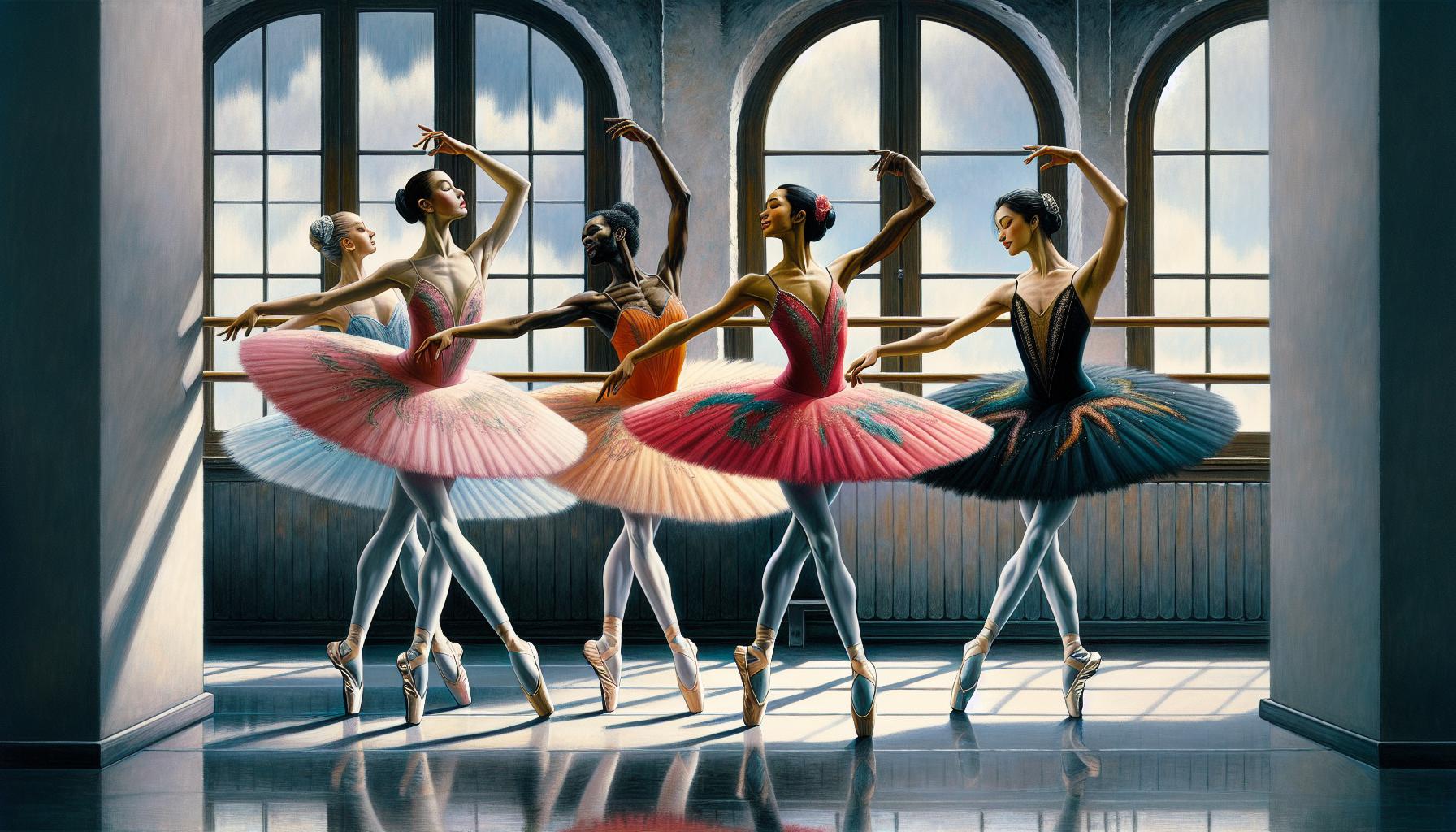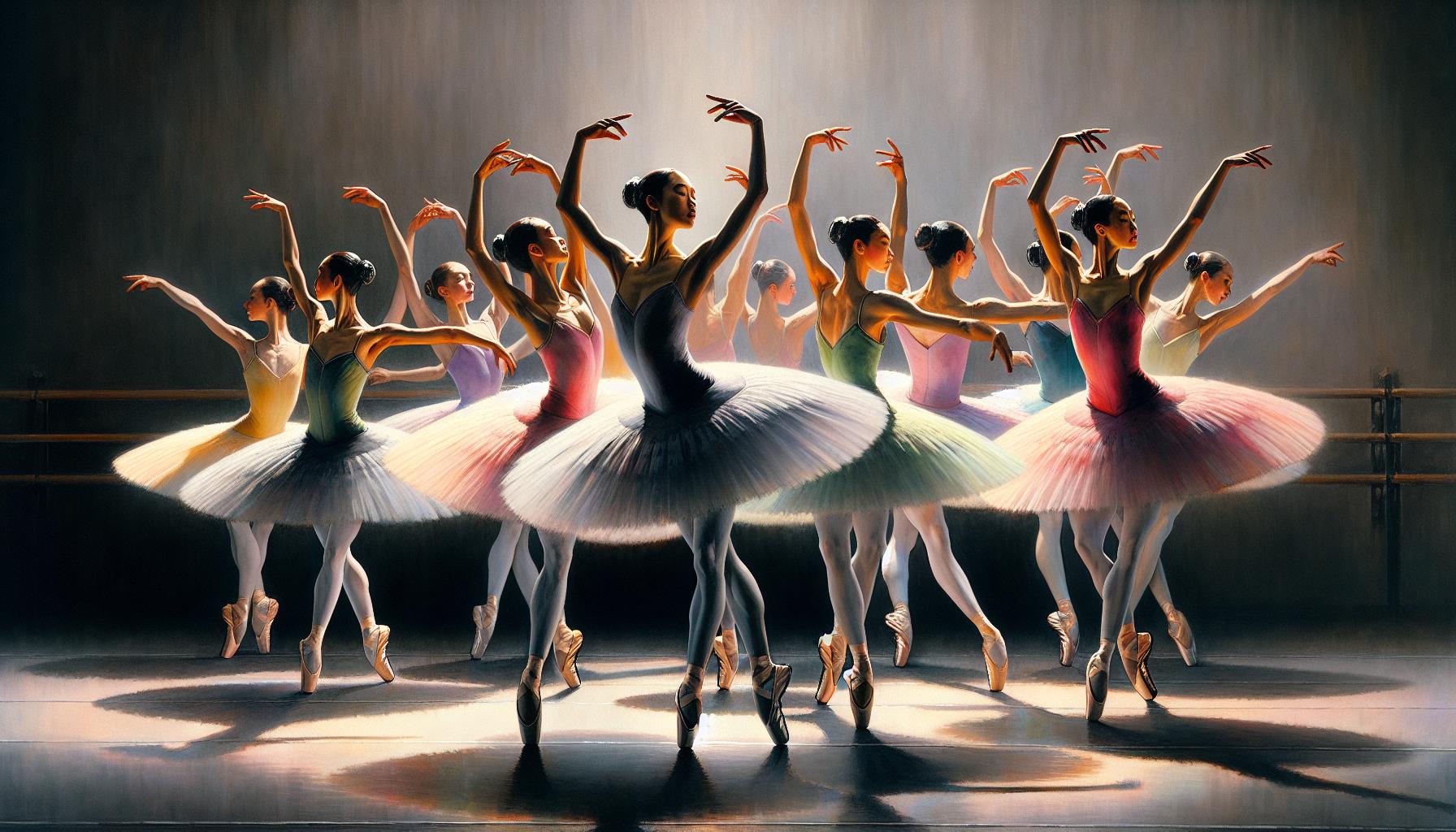When I think of Edgar Degas, I can’t help but admire how he blended Western artistry with Eastern influences, particularly Japanese aesthetics. What japanese characteristic did degas use in the above painting, as well as much of his work? His fascination with Japanese prints and culture not only shaped his unique style but also left a lasting impact on the Impressionist movement. In this article, I’ll explore the specific Japanese characteristics that Degas incorporated into his paintings, revealing how they transformed his approach to composition and subject matter.
What japanese characteristic did degas use in the above painting, as well as much of his work? Degas’s work often reflects a keen sense of perspective and an innovative use of space, reminiscent of traditional Japanese art. By examining these elements, we can gain a deeper appreciation for how he skillfully merged different cultural influences to create something truly remarkable. Join me as I delve into the captivating world of Degas and his artistic journey through the lens of Japanese inspiration.
Key Takeaways
- Fusion of Cultures: Edgar Degas uniquely blended Western Impressionism with Japanese aesthetics, significantly shaping his artistic style and approach.
- Japanese Characteristics: Key Japanese features in Degas’s work include flat perspectives, bold colors, asymmetrical compositions, and a focus on everyday life.
- Innovative Techniques: Degas employed unconventional angles, cropping methods, and dynamic light and shadow to enhance emotional depth and visual interest.
- Impact on Subject Matter: His fascination with movement and everyday scenes, particularly ballet dancers and café life, reflects strong Japanese influences in his choice of subjects.
- Broader Artistic Development: The integration of Japanese elements allowed Degas to transform traditional Impressionist techniques into a distinctive style that continues to resonate in the art world.
What Japanese Characteristic Did Degas Use In The Above Painting, As Well As Much Of His Work?
Edgar Degas’s artistic style stands out for its distinctive fusion of Impressionism and Japanese aesthetics. I admire how Degas embraced Japanese prints’ flat perspectives, bold colors, and compositional methods. These elements significantly shaped his innovative approach to form and space.
Degas often captured everyday scenes, particularly ballet dancers and café life, reflecting Japanese influences in his choice of subjects. His fascination with capturing movement mirrors the fluidity found in ukiyo-e prints. I notice how he utilized unconventional angles and cropping, reminiscent of the way Japanese artists framed their subjects.
His mastery of light and shadow further emphasizes the emotional depth in his work. By applying Japanese techniques, he created dynamic contrasts, adding visual interest. Degas’s unique choreography of figures in space also illustrates the harmony between elegance and motion, demonstrating his deep appreciation for the aesthetics derived from Japanese art.
What japanese characteristic did Degas use in the above painting, as well as much of his work? Overall, I see how Degas’s integration of Japanese characteristics enriched his artistic vocabulary, allowing for a profound exploration of modern life that resonates with viewers.
Influence of Japanese Art on Degas

Degas’s artistry reflects a profound influence from Japanese art, particularly in his unique approach to composition and visual storytelling. I observe how essential Japanese characteristics shape his work, infusing it with a distinctive flair.
Key Characteristics of Japanese Art
Japanese art showcases several defining features that resonate throughout Degas’s paintings. These features include:
- Flat Perspectives: Japanese art often employs a shallow depth of field, which Degas adopted to create two-dimensional spaces in his works.
- Bold Colors: I notice vibrant color palettes commonly found in Japanese prints, which Degas frequently integrates into his compositions.
- Asymmetrical Compositions: He embraces non-traditional arrangements that draw from Japanese aesthetics, enhancing visual interest.
- Focus on Everyday Life: Japanese art emphasizes ordinary subjects, evident in Degas’s portrayal of dancers and café scenes.
- Fluid Movement: The dynamic quality of ukiyo-e prints influences Degas’s depiction of motion, particularly in his dancer studies.
Specific Japanese Techniques in Degas’ Work
Degas incorporates various Japanese techniques into his art that further illustrate this influence, including:
- Unconventional Angles: I see how he often presents subjects from unusual viewpoints, mimicking the unique framing seen in Japanese prints.
- Cropping Methods: His tendency to crop figures creates intimate compositions, reminiscent of traditional Japanese visual formats.
- Use of Light and Shadow: Degas employs innovative lighting to produce dramatic contrasts, similar to the techniques in Japanese inks and pastels, establishing emotional depth.
- Line Quality: The fluid lines evident in his drawings and paintings echo the precise, elegant lines in Japanese woodblock prints.
Overall, the impact of Japanese art on Degas is unmistakable, enriching his exploration of modern life through a lens that marries Impressionism with Eastern aesthetics.
Analysis of the Featured Painting

What japanese characteristic did degas use in the above painting, as well as much of his work? Degas’s featured painting exemplifies the profound influence of Japanese aesthetics on his work. Key elements such as composition, perspective, color palette, and brushwork reflect this unique integration.
Composition and Perspective
Degas employs flat perspectives, reminiscent of traditional Japanese prints, to create engaging spatial dynamics. With cropped compositions, he directs focus toward central figures, often ballet dancers. His use of unconventional angles introduces a fresh viewpoint, inviting viewers into the scene as if observing real life. This approach aligns with Japanese principles that prioritize immediacy and spontaneity, enhancing the emotional resonance of his work.
Color Palette and Brushwork
Degas’s color palette showcases vibrant hues alongside subtle tones, mirroring the typical Japanese use of color in ukiyo-e prints. He blends rich colors with selective highlights, emphasizing movement and depth. His brushwork remains fluid yet precise, capturing the rhythm of the dancers and the ambiance of everyday life. By applying varied brush techniques, he achieves texture and dimension that echo the tactile quality of Japanese art.
Broader Implications on Degas’ Body of Work

Degas’s incorporation of Japanese characteristics extends beyond individual pieces, influencing his overall artistic development. By adopting aspects of Japanese aesthetics, he transformed traditional Impressionist techniques into a unique, vibrant style. Emphasis on flat perspectives and asymmetrical compositions in his works not only showcases his innovative eye but also connects him to a wider artistic tradition that challenges conventional Western norms.
I see that his focus on everyday life reflects a shared ethos with Japanese art. This shared spirit resonates through his choice of subjects, often depicting moments from ballet rehearsals and social gatherings. These scenes become more than mere representations; they embody the immediacy and dynamism found in ukiyo-e prints. Degas’s ability to capture movement and emotion stems from his fascination with Japanese depictions of daily activities.
In analyzing Degas’s color usage, I notice how he employs bold, vivid hues reminiscent of Japanese prints. This vibrant palette creates striking contrasts and lends a sense of energy to his compositions. The interplay of light and shadow in his works demonstrates his deep understanding of atmospheric effects, a skill honed through his study of Japanese techniques.
Degas’s departure from traditional framing further enriches his artistic narrative. His unconventional angles and cropped scenes encourage viewers to engage actively with the artwork, mirroring the immersive experience of a Japanese print. This innovative approach not only enhances the composition’s depth but also invites the audience to experience the work from multiple perspectives.
Overall, the broader implications of Japanese characteristics in Degas’s body of work reveal a profound interconnectedness. By melding Japanese aesthetics with Impressionist principles, he created a distinctive artistic voice that continues to resonate within the art world. This integration highlights the importance of cross-cultural influences in shaping artistic identities, demonstrating how Degas’s exploration of modern life transcended geographical boundaries.
Cross-cultural Influences on Art
Degas’s integration of Japanese characteristics into his work showcases the profound impact of cross-cultural influences on art. His ability to blend Impressionist techniques with elements of Japanese aesthetics has created a unique visual language that resonates with viewers. Through his use of flat perspectives bold colors and innovative compositions he invites us to see familiar scenes in a fresh light.
This fusion not only highlights the beauty of everyday life but also challenges traditional Western artistic norms. As I reflect on Degas’s paintings I appreciate how these influences enrich his work making it timeless and universally appealing. The dialogue between cultures in his art continues to inspire and remind us of the interconnectedness of creative expression.

